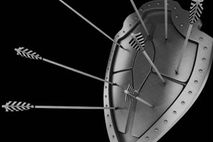The monetary and social implications of planned giving makes a thriving program a strong potential asset for organizations seeking to diversify their fundraising efforts. With fundraisers juggling sustainer programs, major gifts asks, peer-to-peer events, and the like — planned giving can also be strategy that is difficult to get off the ground.
- During the session, “Planned Giving When That’s Not All You Do” at Fundraising Day in New York 2017, Pamela Bennett, director of gift planning for The American Jewish Joint Distribution Committee, and Lori B. Lasson, national director of planed giving and estates for Hadassah, provided basic tips on how to launch a planned giving program and keep it running. Topics discussed included:
- Know what kinds of gifts to market. Bequests, individual retirement account (IRA) and other retirement plan remainders, bank and brokerage account remainders, charitable gift annuities, and charitable remainders are all potential options;
- Understand your role. It is appropriate to give a prospective donor some sample wording for a bequest or provide basic information on tax rules. You represent the organization, not the donor, however, so it would be inappropriate to provide advice or attempt to assert undue influence;
- Build your pool. When building a donor list, include prospects between the ages of 60 and 70, the average bequest age being between 78 and 80. Evaluate the frequency or recentness of their giving to your organization, but not necessarily the size of those gifts. Exclude donors who have already notified your organization that it is in their wills as well as estates, corporations and foundations, and, in some cases, board members;
- Stick to the basics. Mailings, such as booklets, newsletters, reply cards, and donor testimonials, still work best. The American Jewish Joint Distribution Committee sends out three annual mailings per year — two on bequests and one on gift annuities with a follow-up mailing to those with outstanding proposals. Hadassah produces three annual newsletters, three annual e-newsletters, ads on charitable gift annuities in six Hadassah Magazines, and a Rosh Hashanah mailing. Marketing materials should be in large print, in basic black and white with no fancy fonts, and feature tear-off or separate reply cards;
- Follow up. Respond promptly to inquiries with written replies using a template letter. Calls and emails can also be utilized. Keep track of contacts by entering notes into a donor database and assign appeal codes to each mailing to track responses;
- Steward. Thank donors immediately with personal contact, donor visits, events, and the like. Other touches might include birthday or holiday cards; annual report mailings; and adding them to the organizational newsletter list;
- Plan for the end. Retain a trust and estate attorney and send out a condolence letter to the donor’s family. Seek out a copy of the will, trust, or relevant bequest provision. Use a database to track estates. Beware of refusals to provide a copy of the will or trust, attempts to change the purpose of the gift, excessive fees, and attempts to get the charity to cover expenses for the state such as gravestones; and,
- Prepare to wait. IRA and life insurance remainders might take several months to distribute. Small estates might take up to a year, with larger estates taking two or three years.










